The holidays are coming, and the kids will want to be with you while you’re cooking.
Why not plan ways they can help? Don’t underestimate children’s abilities or the pride they take in a well-done job. Introducing your children to the art of cooking creates influential moments in their lives!
Years ago, I was watching my two rambunctious little cousins who were at each other all day long. While one was playing football with some neighbors, the other happened to pass the kitchen on his way outside. Shyly, he watched open-mouthed as I cut the peel from an apple in one long strand.
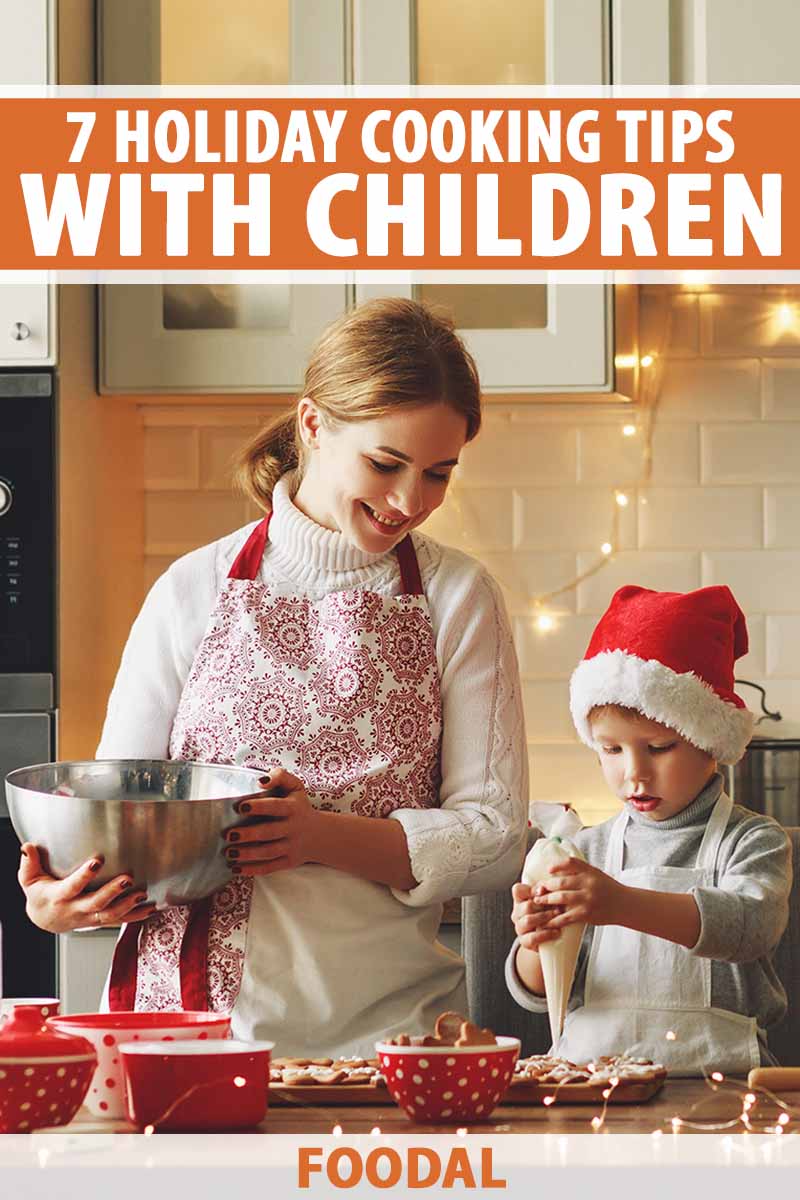
Soon he was doing his best to sound out the words in my recipe and carefully measure a cup of sugar – all while stuffing his mouth full of apple slices.
His brother never missed him. And we had a chance to get to know one another, creating fun memories together that he still remembers to this day.
Read on for fun ways to include your kids in the holiday cooking this year.
Here’s what we’ll discuss:
7 Fun Ways to Include Kids in Holiday Food Prep
Isn’t it ironic that it’s the kids who seem to have all the energy around the holidays when we’re the ones who need it? Tap into the vigor of youth and get your youngsters to help!
From toddlers to teens, young people like to do important jobs and have fun. However, busy adults often prefer to do things themselves to save time.
This year, consider teaching each child in your home a new task that will become a beloved holiday tradition when you prepare festive meals and treats for holidays like Thanksgiving, Christmas, Boxing Day, or the Christmas Eve Feast of the Seven Fishes!
As a kid, I was never allowed to wash the dishes. I could dry and put them away, but my mom or dad had to wash.
When my son was six, I put rubber gloves on him and let him wash the dinner dishes while my daughter dried, and I put them away. It took over an hour, but we loved every minute of it.
Ease up on control of the kitchen and let your young ones help with the following seven ideas that will be fun and valuable for the whole family.
Let’s head to the kitchen!
1. Appoint a Sous Chef
A sous chef is your right-hand helper. Each recipe you make will have one, so everyone’s bound to get a turn.
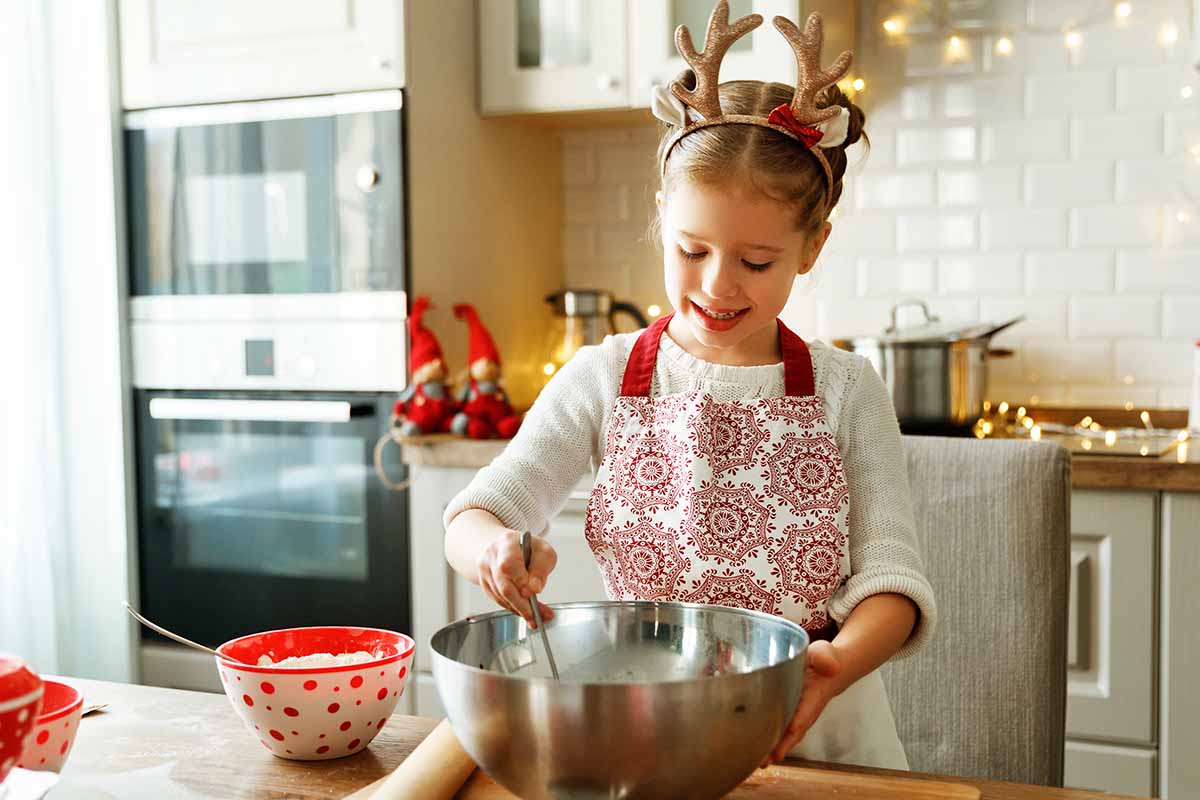
First, do a little homework. Especially if it’s an unfamiliar recipe, review the instructions and ingredients a couple times and make a list of required equipment and food items.
Assist your appointed helper with reading the recipe and supplies list; some elementary and many middle schoolers can do this independently.
As sous chef, this child may gather everything, or delegate tasks to siblings, having one get a spatula, another a pie plate, and so on. Then the children can get out the necessary ingredients and measure them.
During this time, you can place oven racks where you want them, preheat, find your oven mitts, and set out cooling racks and trivets.
In no time, your helpers will have everything ready for cooking!
2. Assign KP Duty
KP duty, or kitchen patrol, is another fun job for youngsters – especially when it involves a built-in reward.
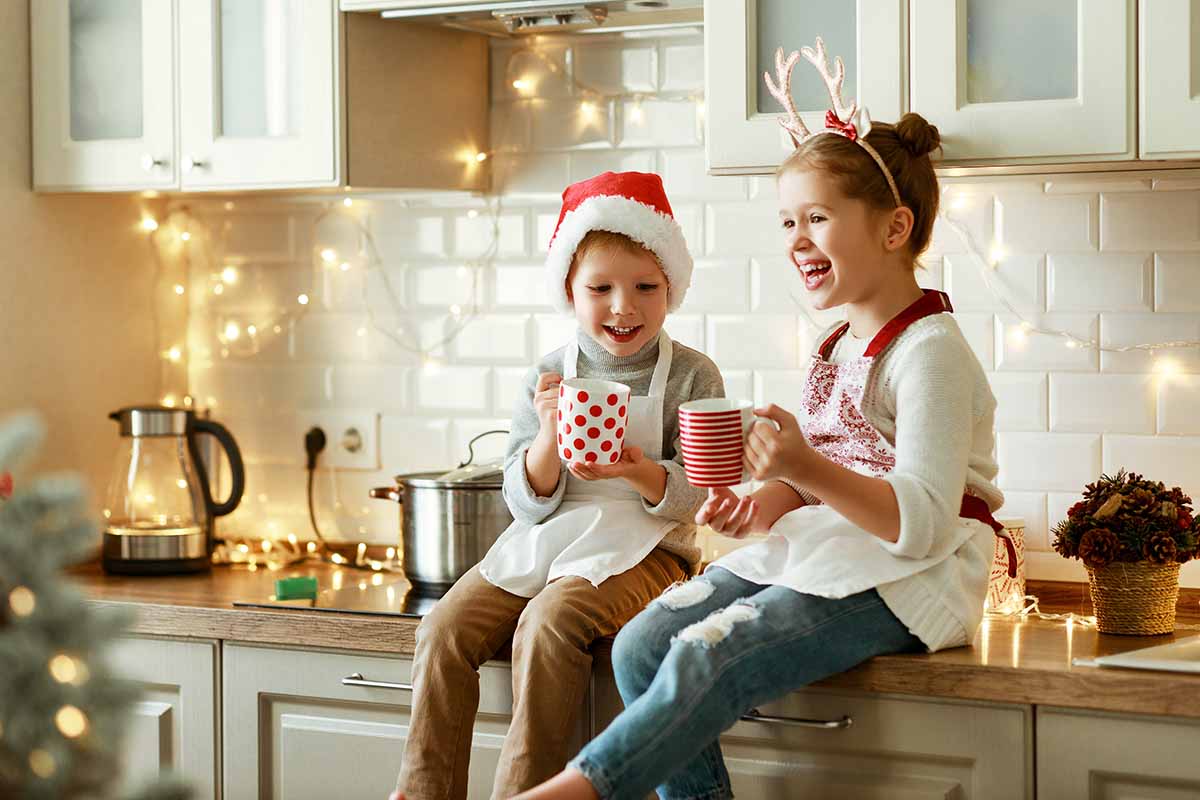
As you finish adding ingredients to your recipe, the KP crew of one or more takes the measuring cups, spatulas, bowls, and so on to the sink for washing.
These lucky youngsters get to lick the spatulas after cakes are frosted and get first dibs on yummy ingredients that don’t make it into the oven, like wayward chocolate chips.
Take it a step further, and excuse your KP staff from helping with the next batch of dinner dishes.
There’s no better help in the kitchen than the ongoing washing of prep dishes, especially if you don’t own several sets of measuring cups and spoons. These helpers will keep the momentum going from recipe to recipe.
3. Roll, Roll, Roll the Dough
Remember that energy we talked about tapping into?
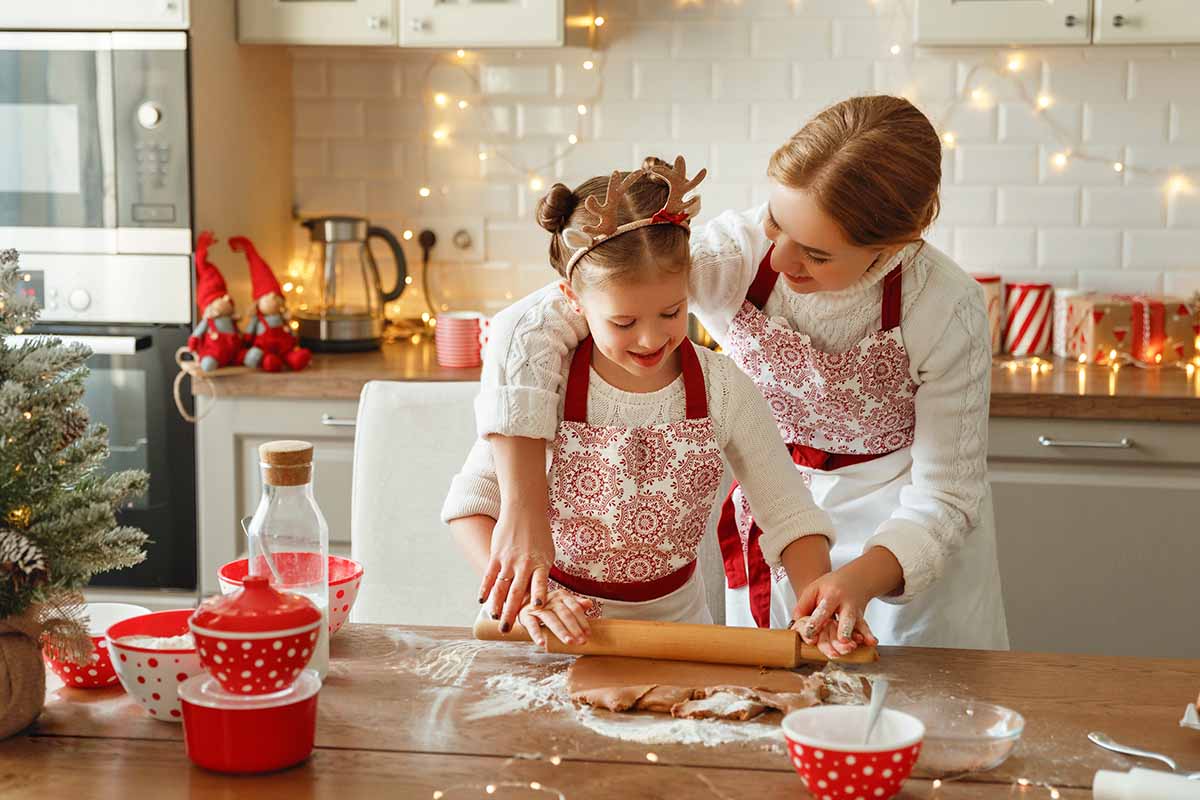
Get your preschoolers involved by teaching them about dough. Helping to roll out pie crusts will give their muscles a good workout, and they’ll be amazed when they see the results of their labor. They’ll also love the hands-on experience of using a rolling pin and “playing” with dough.
The tweens and teens will enjoy the challenge of working crusts into pie plates and learning to flute the edges and use pie weights.
After you have what you need, use the scraps of dough to make little jelly-filled cookies on the order of the Hungarian kiffles. Here’s a simple method to make my version of these tasty jam cookies:
- Take your leftover pie crust dough, and roll it out to a thickness of about 1/4 inch. Cut it into 3- to 4-inch circles. You can use a drinking or measuring cup if you don’t have a round cookie cutter.
- Place a scant teaspoonful of jam or preserves on one half, and fold it over like a cheese-filled ravioli. Seal the edges by pressing gently with a fork. Place them on a baking sheet spaced 1 inch apart from each other.
- Bake at 350°F until lightly browned, for approximately 10 minutes.
- Remove from the oven and roll in granulated sugar.
- Cool completely before eating, on a wire rack with a piece of parchment or baking sheet beneath it to catch the crumbs.
4. Stir up Some Interest
In my opinion, one of the most tedious cooking chores is stirring a pudding or other sensitive dish that requires frequent or constant attention.

When juggling a handful of recipes at once, and while multiple burners are in use, forgetting to stir can spell disaster.
What better way to ensure attention to all pots than by appointing an official stirrer?
At our house, the official stirrer wields a large wooden spoon or two, wears a chef’s apron, and sits on a high stool beside the stove. As the radio is within reach, this helper is in charge of setting the mood with a music station and is also responsible for setting and monitoring cooking timers.
A warning shout from the official stirrer can avert many a gravy boil-over!
5. Encourage the Chef’s Shadow
If the young members of your family haven’t spent much time helping to prepare food, let them watch what you do, and then have them try it.
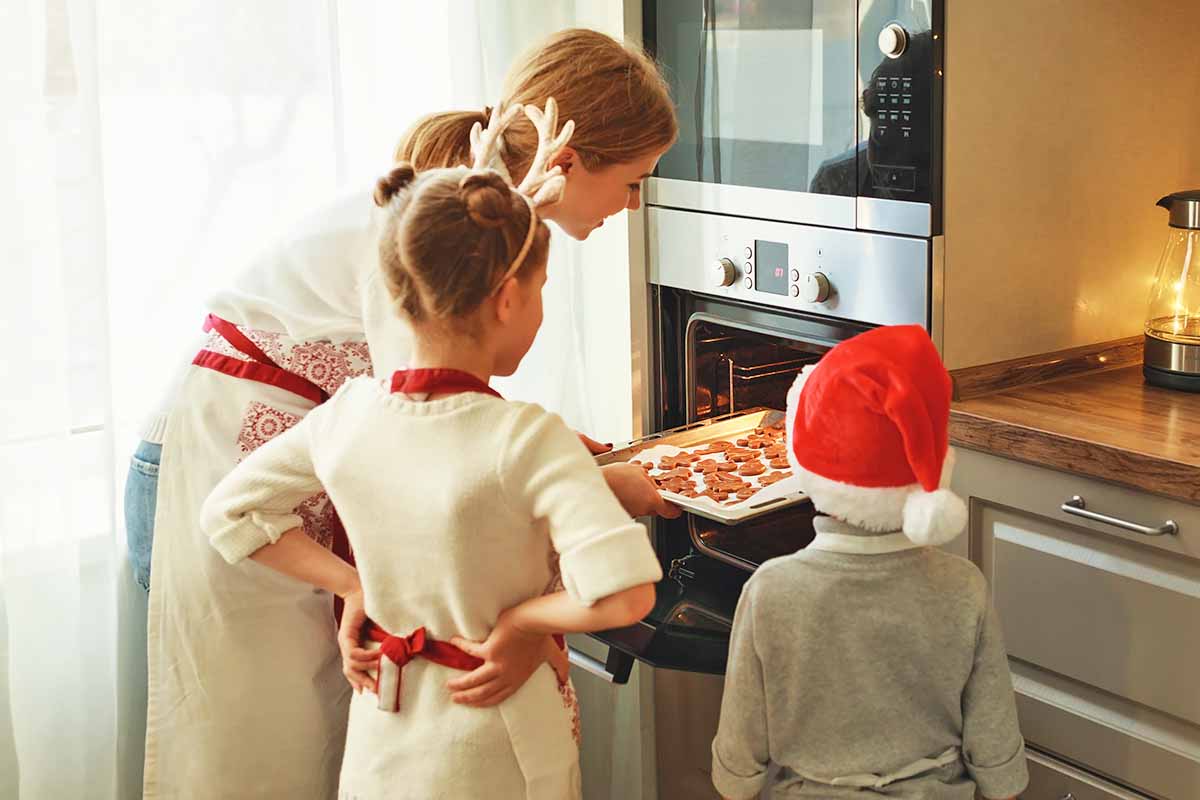
Ask for their help as you go along. There’s no better way to teach cooking techniques than by modeling them.
From reading a recipe to assembling and prepping ingredients, your kids will absorb what you do and begin to anticipate your needs. Before you know it, they’ll be your food prep partners, and cooking together will be a pleasure.
Granted, if you’re in a rush, a child’s questions and limited attention span won’t be as welcome as they will if you’ve set aside ample time to enjoy the experience.
But if we shoo our children away when we’re cooking, how will they ever learn the basics and the family traditions that only we can pass on to them?
6. Instruct the Decorating Committee
Setting a beautiful table is a holiday tradition that creates a festive atmosphere for a joyful celebration.

In my house growing up, and in my own today, the kids have always contributed by making place cards and placemats for each person at the table.
This year, why not let your little ones, tweens, and teens be responsible for table decorations?
Gather holiday-themed craft supplies, crayons, paper, stickers, and the like to keep little ones busy making decorations while you get the cooking underway.
Seasonally-themed recipe cards make great place cards that older children can make for each person.
I’m still using place cards my adult children made years ago for Thanksgiving, with index cards, magazine cutouts, and markers.
Another fun project is making bundles of flatware and napkins to go with each place setting. Sprigs of evergreen and ribbon, pinecones, and ornaments make pretty accessories for the table.
Put older children in charge of setting a lovely table from start to finish, including polishing silver and ironing table linens. Teach them how and give them this job each year.
The kids’ blossoming creativity is the stuff of which memories are made!
7. Have Fun
Most importantly, remember to have fun. Cooking can sometimes feel like a chore. But there are things you can do to prevent any bickering or frustration before it starts.
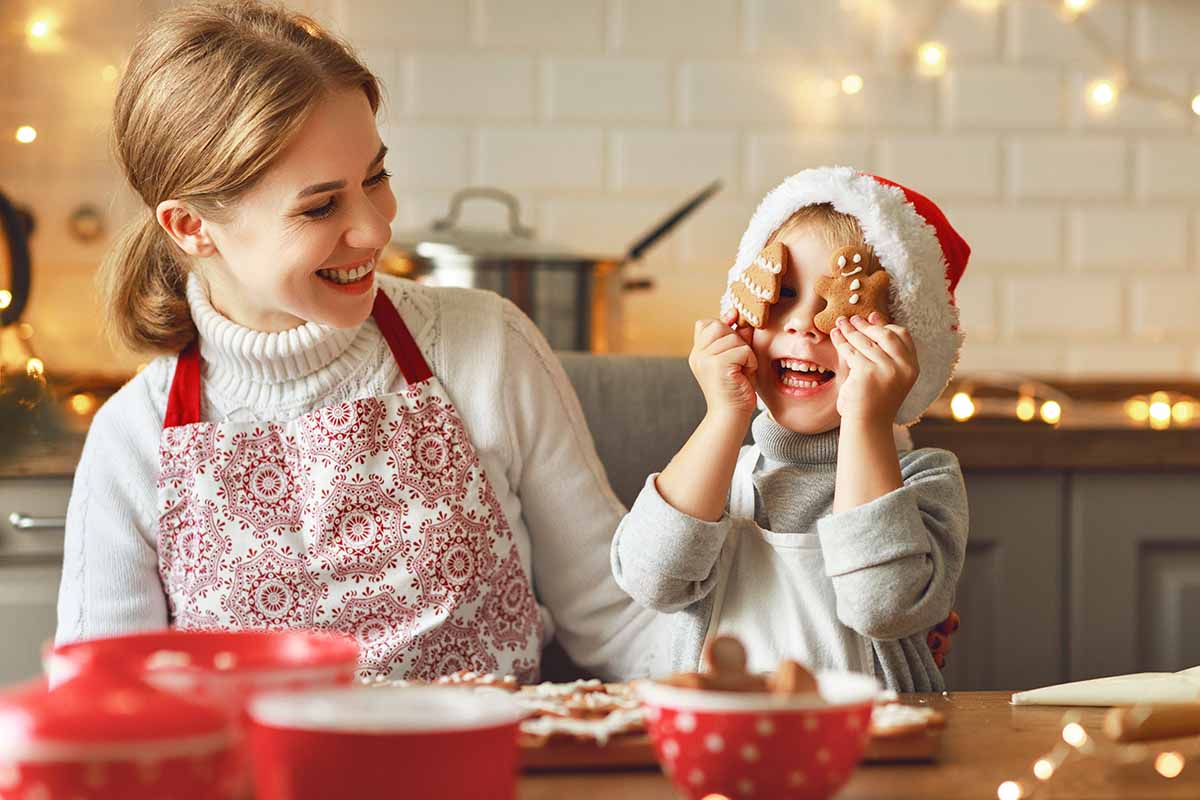
Change up the music occasionally, or shift kids that are growing stressed with a specific task to another job.
When the learning experience is fun, kids will have greater success retaining what they’ve learned. And they’ll be eager to help in the kitchen again, whenever the opportunity arises.
The Family That Cooks Together
Even the most reluctant young people are likely to join in when you let them know their contributions are important to the whole family.
Get everyone involved in the process of making the holidays happen, including your spouse or partner. Start some fun new cooking traditions, and soon the kitchen will be everyone’s favorite room in the house!
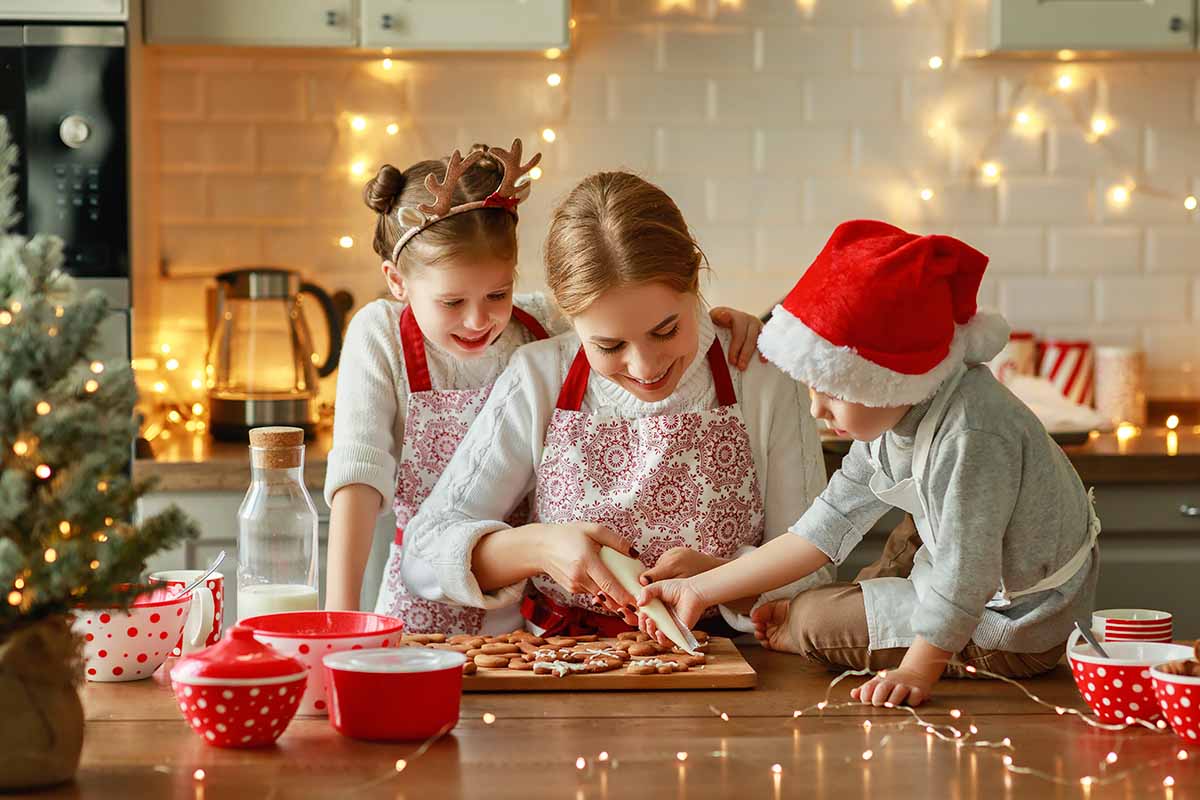
How will your kids help you prepare treats this season? We’d love to hear from you in the comments below.
If you found this article helpful and want more tips for cooking as a family, we recommend reading the following guides:
- 7 Benefits of Cooking from Scratch at Home
- 11 Top Tips for Kitchen Safety
- Start Cooking at Home with these 3 Simple Steps
© Ask the Experts, LLC. ALL RIGHTS RESERVED. See our TOS for more details. Uncredited photos via Shutterstock. Originally published November 23, 2016. Last updated on November 12, 2023.
About Nan Schiller
Nan Schiller is a writer from southeastern Pennsylvania. When she’s not in the garden, she’s in the kitchen preparing imaginative gluten- and dairy-free meals. With a background in business, writing, editing, and photography, Nan writes humorous and informative articles on gardening, food, parenting, and real estate topics. Having celiac disease has only served to inspire her to continue to explore creative ways to provide her family with nutritious locally-sourced food.



